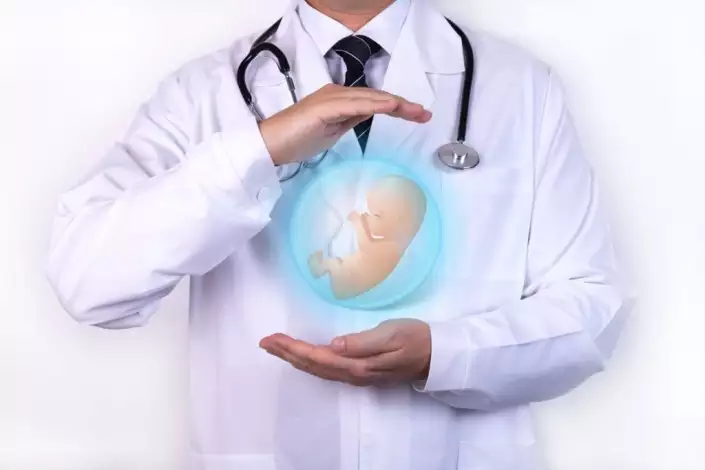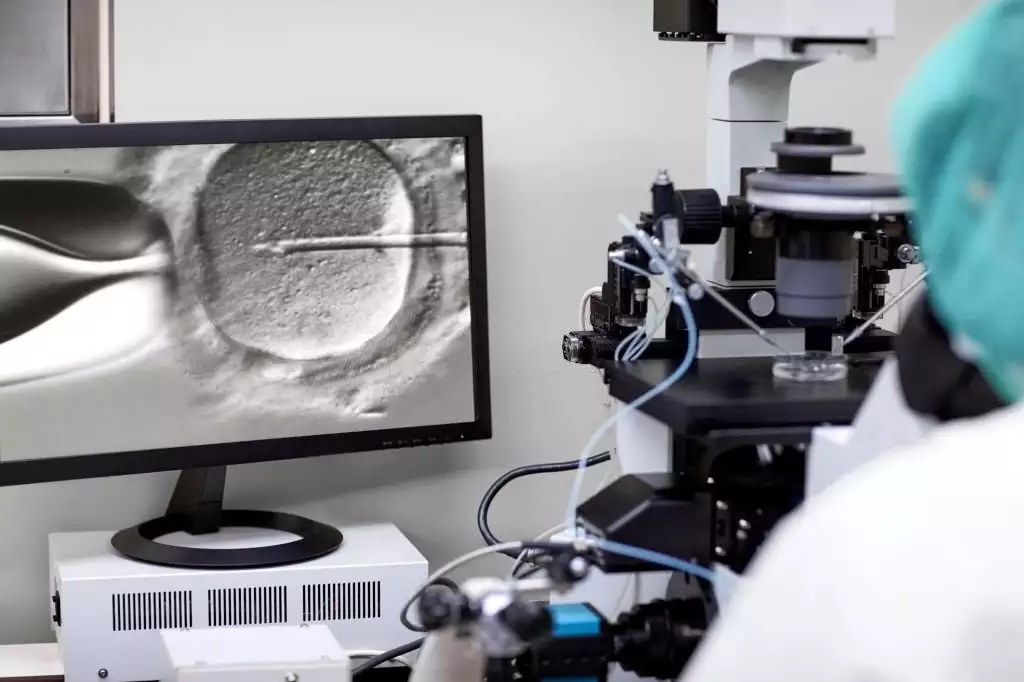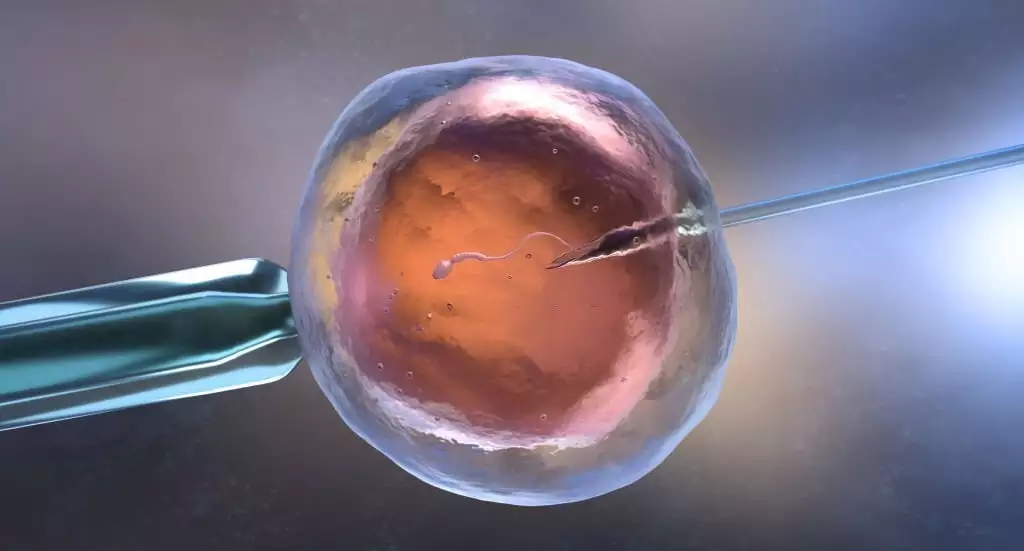
What is in vitro fertilization? How much is in vitro fertilization?
As in all living things, reproduction is an extremely important and instinctive condition in humans. Especially in middle-aged individuals, this motivation intensifies and the desire to have a child becomes irresistible. Having children is not as easy as it seems, on the contrary, this process is very critical and couples try to reproduce for a period of sometimes up to 1 year. Here is where reproduction becomes difficult, cannot occur, etc. In some cases, the result is infertility. The problem of infertility, which may be present in one or both of the couples, is called infertility. Infertility, which is an extremely sad situation in a happy marriage, can cause a sense of inadequacy, loss of self-confidence and subsequent psychological collapse in individuals.
Causes of male infertility
Infertility is a condition that can be caused by many factors, but among the most important causes of male infertility are abnormal sperm production, abnormal functions of sperm and morphological disorders. People's lifestyles can also affect and exacerbate these factors.
- Decreased sperm count or motility
- Structural defects in sperm
- Absence of sperm cells in the semen (Azospermia)
- Failure of sperm to ejaculate into the bladder
- Hormonal disorders
- Previous cancer treatments
- Various infections
- Deficiencies in the hormone testosterone
- Stress
- Tobacco and its products and alcohol consumption, unhealthy living
- Diseases such as gonorrhea and syphilis
- Undescended testis at birth
Etc. Causes can cause infertility in men.
Causes of infertility in women
The most important cause of infertility problem in women is partial or complete blockage of the uterine tubes. These tubes form the ovarian canal in the uterus, and during fertilization, the sperm pass through this canal and reach the egg. If the tubes are clogged, sperm cannot pass through the canal, so fertilization cannot occur. The most important cause of infertility problem in women is the clogged tubes. In addition, various reasons cause infertility, some of which are as follows:
- Problems with the ovaries
- Tubes are broken or not working properly
- Polycystic over
- Thyroid gland and hormonal disorders
- Some congenital or congenital disorders
- Premature menopause due to lack of eggs
- Uterine anomalies, uterine dilatation, uterine fibroids, extrauterine tumors
- Overweight conditions such as malnutrition, obesity
- Cancer treatments (radiotherapy, chemotherapy)
- Heavy consumption of tobacco and its products, alcohol, caffeine
- Irregular menstrual period,
- Immune system disorders
- Some sexually transmitted infections, diseases, complete or partial obstruction of the uterine tube
- Diabetes
- Allergic causes
- Prolactin (milk hormone)
Sometimes, the causes of infertility in women cannot be determined exactly. In such cases, this situation is mostly not very serious and arises due to minor problems arising from both sides. In such unexplained infertility problems, couples can have children spontaneously over time.
What is IVF?

In vitro fertilization, which is applied as an assisted reproductive method in case of infertility in one or both of the couples, in case the egg and sperm cells that cannot come together in normal ways, the embryo cannot form or the formed embryo cannot adhere to the uterus, the sperm and ovaries are collected from the body and fertilized in the laboratory environment, and the resulting embryo is obtained. It can be expressed as the conclusion of pregnancy by placing the embryo in the uterus.
IVF; in vitro It is called fertilization, intracytoplasmic sperm injection or assisted reproductive technique or microinjection. The difference between these techniques is the difference in fertilization methods. In the microinjection technique, the sperm is placed directly into the egg through a micropipette. With this technique, it has led to very good results in the treatment of infertility caused by male problems. In cases where there is no sperm in the semen or the existing sperm cannot come out, methods called TESE and TESA are used. With the TESA method, in cases where the sperm ducts of the man are blocked, tissue is withdrawn from the testicles with the help of a needle, and the egg is fertilized with the sperm obtained from these tissues. In the TESE method, tissue is taken directly from the testicles, sperm is searched, with this process, sperm finding and fertilization are much easier, and in the TESE method, the testicles are damaged much less. When this process is done with micro, it is called micro TESE.
Why is IVF done?
- If you do not become pregnant despite 3 vaccinations
- If the uterine tubes are blocked bilaterally
- Endometrioma in medical language - In cases where the treatment is inconclusive due to the prevalence of chocolate cysts called endometriosis in the uterus
- In case the amount of sperm is low or zero or if the sperm activity is severely impaired
- If pregnancy cannot be achieved although many treatment methods have been tried, that is, in the case of unexplained infertility.
- Unsuccessful pregnancy stories
- Decreased number of ovaries in the uterus
- Various hormonal disorders
Treatment Stages
A standard IVF treatment consists of different stages that are interconnected and must be very carefully regulated. The result of each stage is considered a success criterion for the next stage. For example, the appropriate number and quality of egg cells obtained during the application is taken as an important criterion for fertilization and the next stage of embryo development.
IVF in Turkey
11 years after the first application in the world, the first IVF baby was born on April 18, 1989 in our country. It remained a treatment method from that date until the late 1990s. It was carried out in only a few hospitals in big cities such as Istanbul, Ankara and Izmir, but it was not well known by the society. The fact that infertility, in other words, infertility is accepted as a taboo among the people due to the structure of Turkish society, played a major role in this. Since the beginning of the 2000s, it has become a giant sector where more than 45,000 couples are treated and have children annually, with the investments of the private sector and the participation of the media.
When we look at the statistical values, the current IVF center and the number of IVF treatments, we are among the top 10 countries in the world, and we are one of the last countries in the international ranking. There are approximately 120 private and public IVF treatment centers throughout Turkey. As such, competition between centers is increasing day by day. Especially, the regulations created by the Ministry of Health and the practice guides created by the professional associations and the restrictions on the application methods and the number of transferred embryos are tried to be realized by using advanced technology equipment and advanced medical protocols. Thus, in vitro fertilization treatments and applications are carried out with the highest standards of medical technology, with the most advanced and high success rate.

Evaluation of the Couple - Stimulation of the Ovaries - Embryo Formation
Appropriate treatment is planned as a result of the necessary examinations and analyzes, and in the second stage, external hormone therapy is applied to ensure the development of a suitable number of eggs for the treatment. At this stage, which is called ovulation induction, it is aimed to obtain more than one egg cell by applying a certain drug prescription. Although some protocols are frequently used among specialists, drug doses must be applied individually for a successful induction of ovulation because the same dose of the drug can produce quite different results in different individuals and therefore in different metabolisms. For this reason, obtaining the necessary and appropriate number of eggs without disturbing the physiology of the female client in IVF treatments really requires knowledge and experience.
Recent studies show that pharmacogenetics (the branch of science that studies the different effects of pharmacological drugs in parallel with changes in human genetic structure) can be very useful in determining individual drug doses. In other words, genetic susceptibility tests to be performed before using drugs in the future will enable the individual to determine dose amounts and administration methods in order to ensure that the individual can benefit from the drug at the highest level and be more effective. According to these results, the treatment method will be used.
Another important development we can mention is the development of drugs that can maintain their effectiveness for a long time. In current treatment methods, the patient is required to take egg development hormone daily and at a certain dose in order for egg development to occur. The newly developed drugs aim to allow the patient to apply this procedure once or twice during the treatment, not daily. If such drugs, which are currently in the testing phase, are accepted into treatment programs in a short time, it is expected to significantly increase patient comfort.
Hormone drugs are used to stimulate the ovaries. For this, suppressive hormones are used for about two weeks before treatment. The person can apply these hormones to the subcutaneous area on his own. Following suppressive treatment, the patient who has menstruation is called on the 3rd day of her period, evaluated with blood tests and ultrasonography, hormonal drugs are started to stimulate egg development, folic acid and zinc support are provided to prevent possible disorders in the nervous system . In addition, patients are given short-term antibiotic therapy when necessary. The purpose of these procedures is to obtain a much larger number of eggs and then a large number of embryos to maximize the chance of pregnancy. The doses of the drugs used and how long they will be used differ for each patient. This woman is determined according to the age of the client, blood hormone levels, number of eggs, results from previous treatments and height/weight index.
The most commonly applied protocols are short, ultra-short, antagonist and long protocols. Which of these is most suitable for the person is decided after the first examination. After starting the drugs, blood and ultrasound examinations are performed at regular intervals to monitor egg development, this may take approximately 10-14 days. When the desired egg size and the thickness of the inner wall of the uterus (uterus wall) are reached, a cracking injection is made and egg collection begins 34-36 hours after that. However, there is a situation that should not be ignored. Eggs are not found in every follicle called an egg on ultrasound . Especially in patients with 1-2 eggs ( follicle ) seen on ultrasound, eggs may not be obtained in the egg collection process. Sometimes the opposite happens, and in patients with more than one follicle , more eggs than expected may be obtained as not all of them can be counted on ultrasound. In another case, it is the fertilization rate of the eggs. This rate is 70-80% on average. That is, 7-8 out of 10 eggs are fertilized. However, in some rare cases, none of the eggs are fertilized and the transfer process does not occur. This situation is explained to the couple and the treatment is terminated.
Stimulation of the Ovaries
The third stage, when the maturation period is completed, is the stage of collecting the developing egg cells in the operating room environment in the second stage, evaluating the eggs taken in the laboratory environment and combining them with the sperm cells taken on the same day. Egg collection (OPU- Oocyte collection) is an operation performed vaginally with the help of a needle attached to the Ultrasonography (USG) probe 34-36 hours after the egg breaking needle is inserted . It is applied under local or general anesthesia. If general anesthesia is to be administered, the patient should not eat or drink anything after 24 hours the night before. Each follicle in the ovaries is evacuated one by one with the help of a needle under the guidance of vaginal USG and taken into sterile tubes. The follicle fluid in the tubes is examined under the microscope in the embryology laboratory and it is investigated whether there is an egg in it. If the egg is not found the first time, the follicle is washed by giving fluid to the follicle again, and the egg search is continued by emptying it again. After the egg is found, it is passed to other follicles . Egg collection and selection takes about 10-30 minutes. Sometimes there is no harm in taking appropriate painkillers, as groin and abdominal pain may occur. Rarely, minor bleeding and infections may occur.
If the number and quality of sperm cells taken from the spouse is suitable for fertilization of the eggs obtained, these eggs and sperm cells are placed in the same chamber in the embryology laboratory and fertilization of the egg is ensured with the best quality sperm, just like in a normal pregnancy. If the sperm cells obtained are not suitable for this process in terms of number, mobility and quality, the sperm cells selected by the method called microinjection are injected into the eggs one by one. In some cases, when there are no sperm cells in the semen sample taken from the spouse, sperm cells are obtained from the tissues taken from the male ovaries (testes) and used in microinjection. From the moment the egg and sperm cells are taken, they are kept in a laboratory environment and in technological devices called incubators, in special liquids, in an environment similar to the body environment (which can provide a standard temperature and gas ratio). Fertilization checks of the eggs are made in the laboratory 16-18 hours after this application, that is, in the morning of the next day. The genetic material from the male and female forms two progenitor nuclei in the egg. This structure is defined as normal fertilization and they are taken into incubators where they are grown again to follow the advanced embryo development stages. About 70% of egg cells retrieved in a standard IVF procedure and considered mature are from normal fertilization. Of course, this rate may vary depending on the reasons for infertility of the couples, the age of the patient, and the quality of the egg and sperm cells used.

Embryos for Transfer
With the fourth stage, couples are closer to the happy outcome. At this stage, fertilized embryos are grown with the help of special fluids and devices, similar to the physical conditions in the maternal reproductive system, as mentioned above, and the best embryo is selected. In a normal pregnancy, the embryo, which emerges approximately 4 or 5 days after the egg and sperm cells come together and fertilization takes place, now reaches the stage of attachment to the uterus and pregnancy. Embryos obtained in IVF laboratories are grown in a similar way and their daily development is followed, and the embryo or embryos with the highest chance of attaching to the uterus during this period are carefully selected by experienced specialists. If embryos of higher quality than the number to be transferred are obtained according to the result of the treatment, these embryos can be frozen and stored for five years and can be used to achieve pregnancy again when certain conditions are met within this storage period.
Embryo Transfer
In the last stage, the embryo with the most positive pregnancy potential is transferred to the mother's uterus with a special catheter , and this is the most important part of the treatment. No matter how strong the embryo is, if any trauma occurs during the transplant (even very minor), this can make it difficult for the embryo to attach to the uterus. In this sense, the transfer process is as important and critical as the other stages.
Embryo transplantation can be done on the 2nd or 5th day after fertilization. Depending on the quality of the embryo, the number of developing embryos, the age of the patient and the diagnosis of his genetic makeup, the day of the transplant is decided. If all the conditions are suitable and the condition of the client is good, the transfer process is quite suitable on the 5th day.